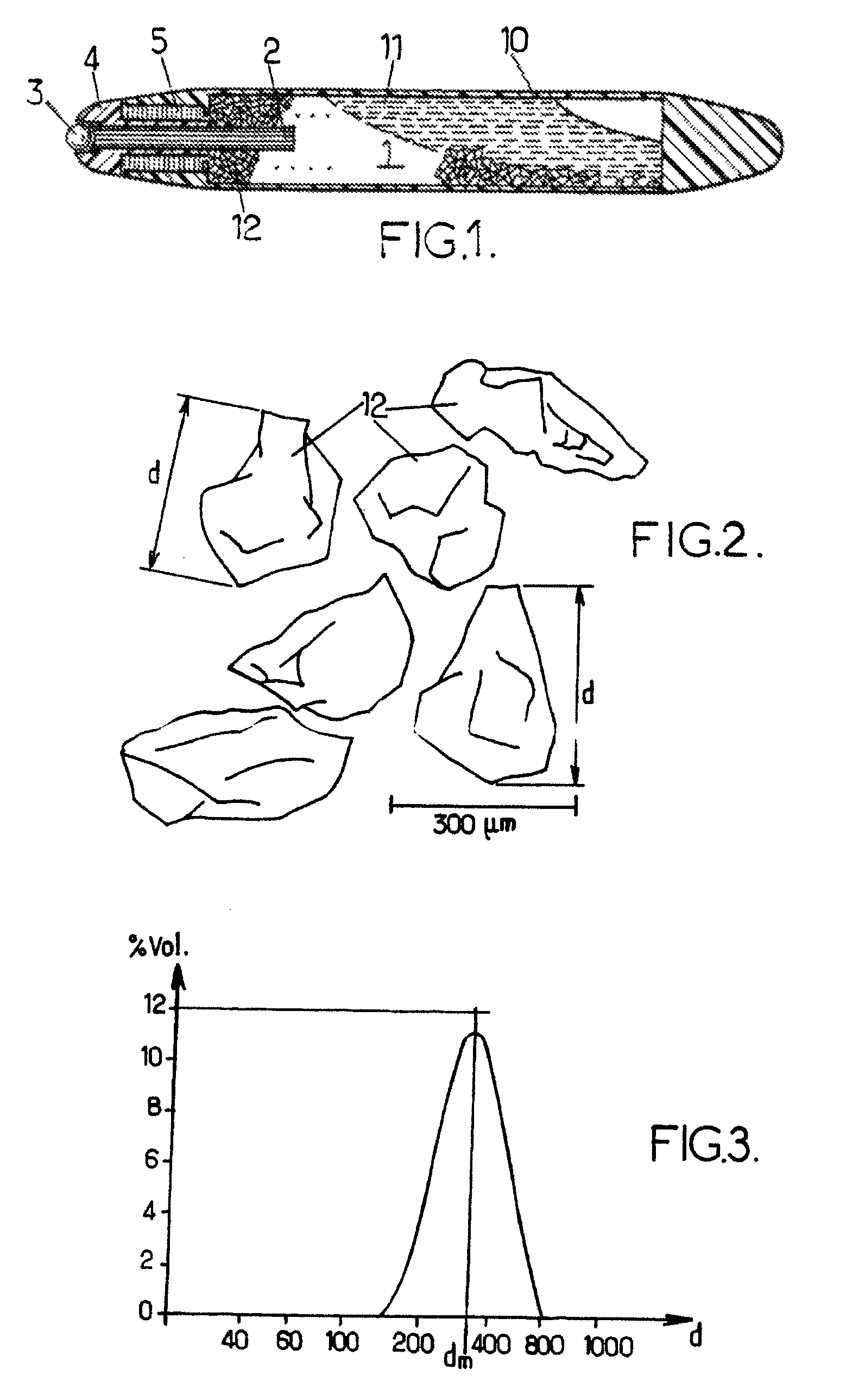Writing instrument containing a granular material in the ink chamber
a technology of ink chamber and granular material, which is applied in the field of writing instruments, can solve the problems of difficult reproducible production of ink in large runs, difficult sintering step, and considerable additional cost of the pen, and achieve the effect of improving the capillarity of the ink
- Summary
- Abstract
- Description
- Claims
- Application Information
AI Technical Summary
Benefits of technology
Problems solved by technology
Method used
Image
Examples
Embodiment Construction
[0033]It is understood that the dimensions of the various portions of the writing instrument that are shown in FIG. 1 do not correspond either to real dimensions or to real dimension ratios. In particular, these dimensions may be adapted to obtain a writing instrument that has a greater ink content, or to produce a writing instrument that has a pocket format.
[0034]As an example, the writing instrument shown in FIG. 1 is of the “roller pen” type. It comprises an ink reservoir 1 that is limited by a side wall 10, a connector 2, and an ink roller 3 which forms the writing tip. The ink roller 3 is held, while remaining free to rotate, by the mount 4 that is attached to an anterior end of the reservoir 1. The connector 2 allows a flow of the ink 11 that is contained in the reservoir 1 toward the ink roller 3. It may consist of a cylindrical assembly of fibers aligned longitudinally and designed to be impregnated by the ink 11. If necessary, one end of the connector 2 may protrude into th...
PUM
 Login to View More
Login to View More Abstract
Description
Claims
Application Information
 Login to View More
Login to View More - R&D
- Intellectual Property
- Life Sciences
- Materials
- Tech Scout
- Unparalleled Data Quality
- Higher Quality Content
- 60% Fewer Hallucinations
Browse by: Latest US Patents, China's latest patents, Technical Efficacy Thesaurus, Application Domain, Technology Topic, Popular Technical Reports.
© 2025 PatSnap. All rights reserved.Legal|Privacy policy|Modern Slavery Act Transparency Statement|Sitemap|About US| Contact US: help@patsnap.com


